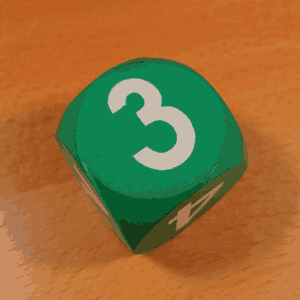

![]()
Team points on a Post-it
I was at a charter middle school the other day to make a short presentation to the staff. As I was setting up, the principal came into the auditorium to remind me that, prior to my talk, one of the teachers was going to present a 15-minute video that showed some of my techniques being used in her math class. Apparently she had learned these strategies from both the Eight Great Ideas book and by hearing about them from another teacher.
At a certain point in the video, the students were working in teams of four to solve a few problems in preparation for state testing. While they were busy solving the problems, the teacher was "working the room."
In the center of each four-desk work area, there was a large Post-it with a number 5 written on it.

The Post-its purpose, we were told, was to indicate how well the team was working together. Any indication that things were breaking down or not moving along successfully meant that the Post-it score was crossed out an a "4" was written on it.
This is similar to the discipline program that is based on a color-coded pocket chart. Each student starts with a set of construction paper squares of different colors and has a square removed for inappropriate behavior. It's a bit of an Old School thing and is in serious need of a more effective replacement. as noted in the eBook, Clip Chart.
The Post-it score indicator is a great idea because it's both simple and effective.
Here's one quick thought: why not use a large die?

The die would represent the score as well as the Post-it but the numbers wouldn't need to be marked out and written over. A team would merely turn the die to show a new score. The die is also a bit more playful and having fun is one of the five basic student needs.
Concern
My one concern with the team score Post-it idea--which is the same concern I have with the color-coded pocket chart idea--is this: What score does each team start with? (I didn't ask at the time but will find out when I return to the school on Monday and report back here.)
If each team starts out on "5" yet "5" is the best you can do, then the only thing the teacher can do initially is ask a team to exchange the "5" for a "4" because of some cooperation issue. Granted, the team could be returned to "5" status by exhibiting better behavior later in the activity; nonetheless, the initial focus is negative.
But what if each team started with a "3" on the Post-it and was afforded the opportunity to work their way up to a "5" or even a "6" as a result of their hard work and focus? This, in my opinion, would be a much better way to go.
For one, the responsibility of earning a higher score would be shifted to the team of students. Without any kind of effort, the Post-it would stay a "3." If you want a higher score, you're going to have to exhibit some serious work.
Another advantage is the ability for the teacher to recognize and reward a team's effort from the very beginning of the activity, especially if the score topped out at "6." I'm picturing myself walking around the room after getting everyone started. It would be an almost non-stop "Score up, please," as I saw teams immediately engage in the task within the first few minutes of working the room. After that, I could slow the pace a bit and look to recognize real cooperation and focus.
![]()
Commander Mark
I was sharing the fact that I allowed my students the freedom to use the ten minutes just before lunch to engage in whatever activity they wished. Reading independently, using the computers, and completing class jobs were just a few of the many options. (That's why we called those ten minutes "Op Time." It stood for opportunity time or option time.) Part of the understanding, of course, was that they had to complete any unfinished assignments before they could do anything else. But other than that, it was up to the students to choose.
After sharing that idea, I detected a note of tension in the group. The vibe I was picking up on came mainly from the new teachers in the group. So I addressed it.
"I'm getting a feeling that some of you might be uncomfortable allowing your students free time in light of the increased pressure for directed instruction and time-on-task. Am I correct?"
There was a lot of head nodding. I then reassured them that it was not goof-off time or mess around time. It was serious and that the students upheld their part of the bargain by staying on task.
At this point in the dialogue, I offered another suggestion. How about a short art lesson just before lunch? I've done that with several different classes--from third grade through sixth grade--and it's always been a winner. Here's how I did it.
I used Mark Kistler's wonderful drawing book called Draw Squad. In the book he offers a series of simple, easy-to-teach lessons--five minutes max--that will transform non-artistic students--and teachers!--into accomplished 3D artists in a matter of months. And as opposed to having just the normal two to three artists in your room, you'll have a dozen or more who truly possess the beginnings of a budding talent for drawing.
Advantage: One nice thing about the drawing lessons---other than how simple it was to present them: a five-minute lesson from me on the white board follow by five minutes of the students working on the lesson--was how calm everyone was just before lunch. As opposed to the normal stress and anxiety of "When's lunch?", there was a serene atmosphere of quiet concentration on the art lesson. When it was time to go, I would interrupt them with a soft, "Hey, guys? It's lunch time." At which point they would put away their drawing materials and quietly line up for lunch. Loved it.
